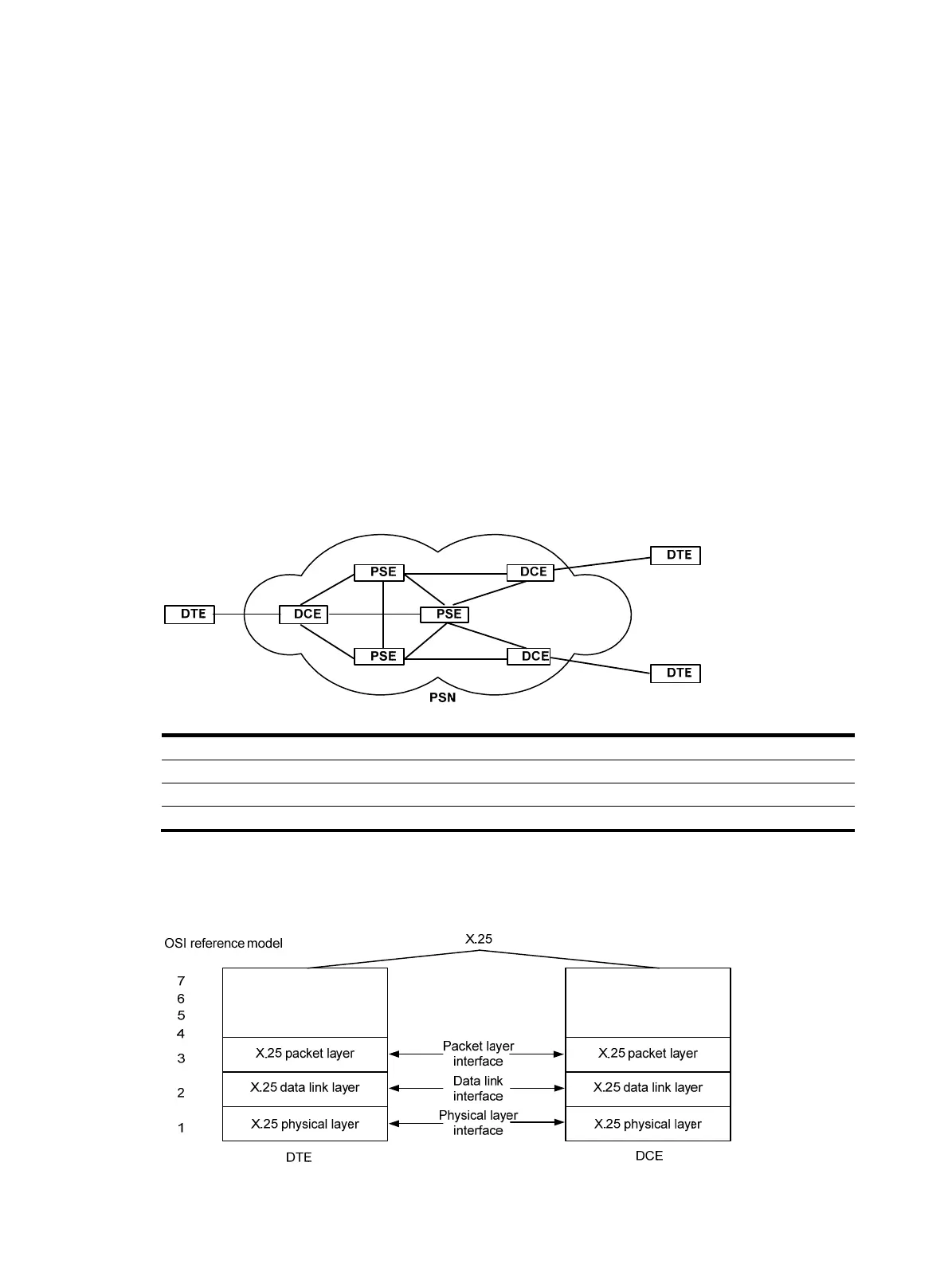310
Configuring LAPB and X.25
Overview
X.25
X.25 is an ITU-T standard protocol suite for packet switched WAN communications. It defines how
connections are established and maintained between user devices and network devices.
The first draft of X.25 was released in 1974. It incorporated the experience and recommendations
from Telenet and Tymnet in the USA and the Datapac packet-switched network in Canada. It has
evolved to include more feature options and facilities.
An X.25 network comprises three types of devices: DTE, DCE, and PSE. DTEs are user devices
communicating across the X.25 network. They are usually terminals, personal computers, or
network hosts. DCEs are communications devices, such as modems and packet switches. PSEs are
switches in the carrier's network cloud. They transfer data from one DTE device to another through
the X.25 network. Figure 120 sho
ws the relationships among the three types of X.25 devices.
Figure 120 X.25 network model
DTE Data terminal equipment
DCE Data circuit-terminating equipment
PSE Packet switching exchange
PSN Packet switched network
As shown in Figure 121, X.25 defines three layers identical to the lowest three layers of the OSI
reference model.
Figure 121 X.25 protocol layers

